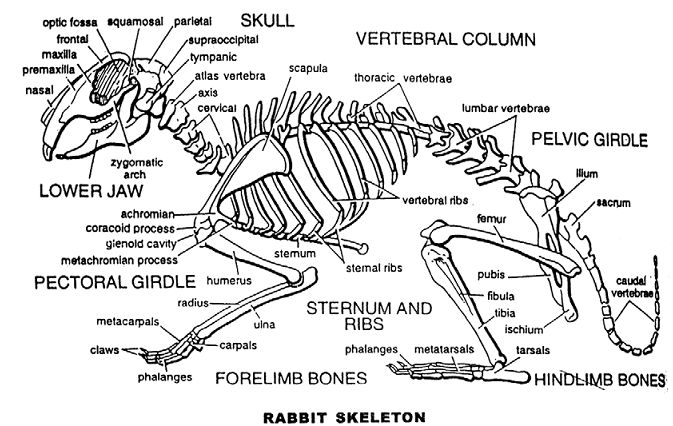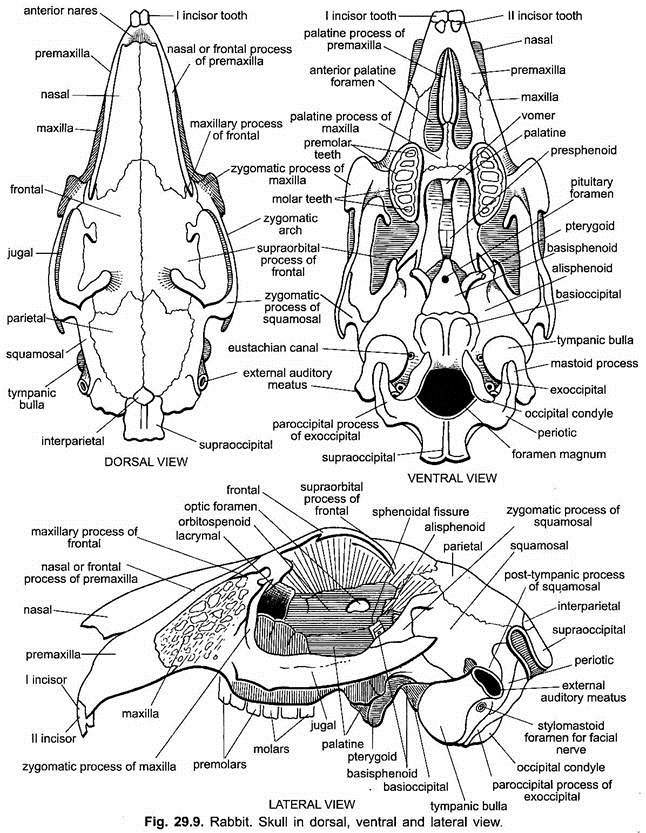
The rabbit skeleton is delicate compared with other mammals. It makes only 8% of the body weight, as compared to 12 to 13% in cats.
Here are some other important points to note about the rabbit skeletal system:
There are 46 bones that make up the spinal column alone, 7 cervical (the neck), 12 thoracic (the chest), 7 lumbar (the lower back), 4 sacral (the pelvis) and 16 coccigeal (the tail).
A rabbit’s bones have extremely thin cortices and are easily shattered.
- The lumbar vertebrae are elongated to allow for considerable flexion and extension during hopping, but this makes them susceptible to fracture.
- The powerful hind limb musculature and light skeleton enable powerful jumping over long distances.
- The hopping movement is made possible due to the hind legs being longer than the fore legs. Most of the elongation is below the stifle (the knee) in two bones, the tibia and fibula. The tibia is also prone to fracture.
- Rabbit’s hind legs can kick out with extreme force and if they struggle when they are picked up, or even when they stamp their feet violently on the ground, they are prone to fracture of their backbones (usually the 7th lumbar vertebra) and damage their spinal cord.
- Rabbits have 7 tarsal bones (the ankle) and 4 digits on both hind legs, and 9 carpal bones (the wrist) and 5 digits on both fore legs. Each digit has an associated toenail.


